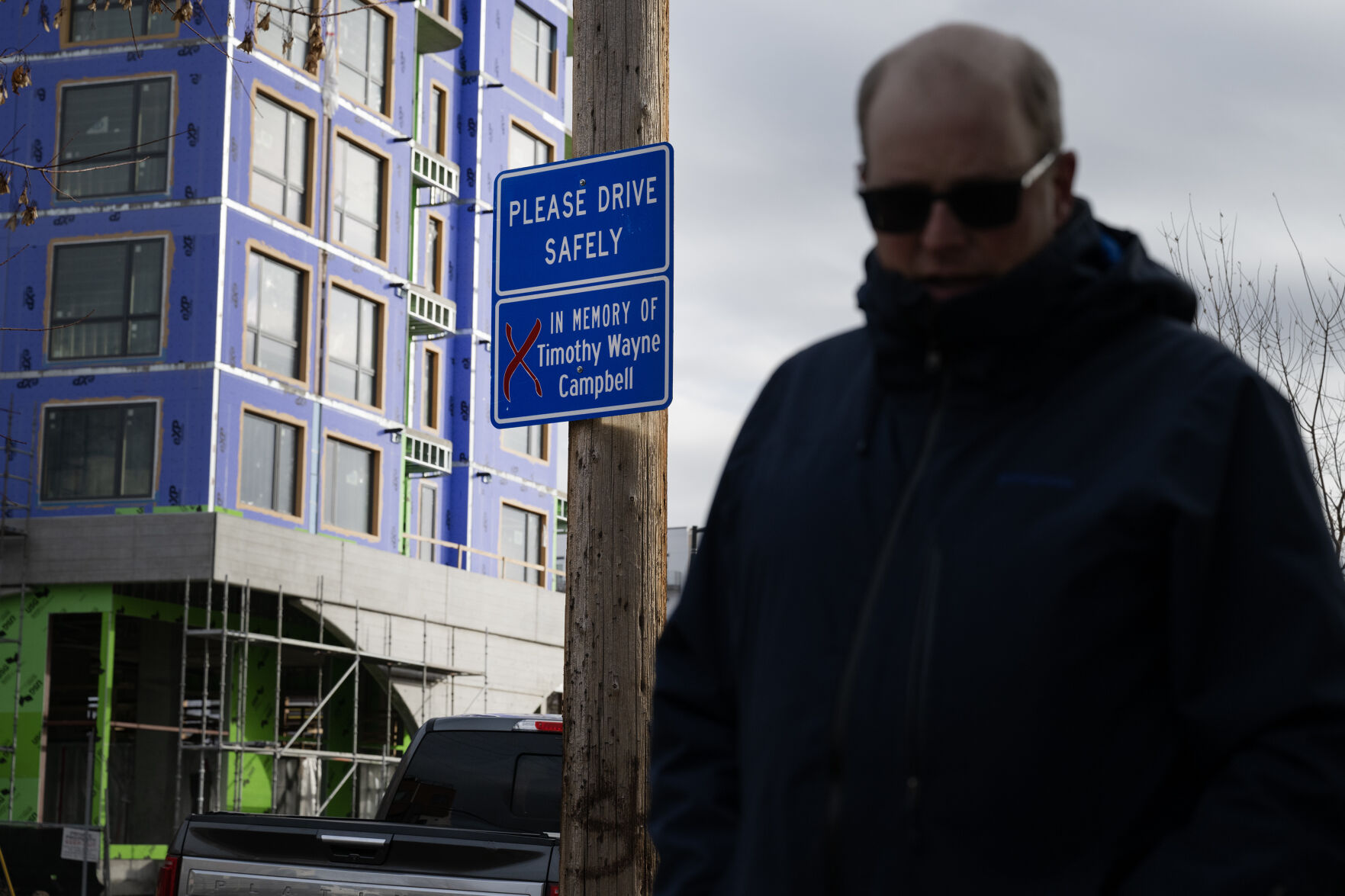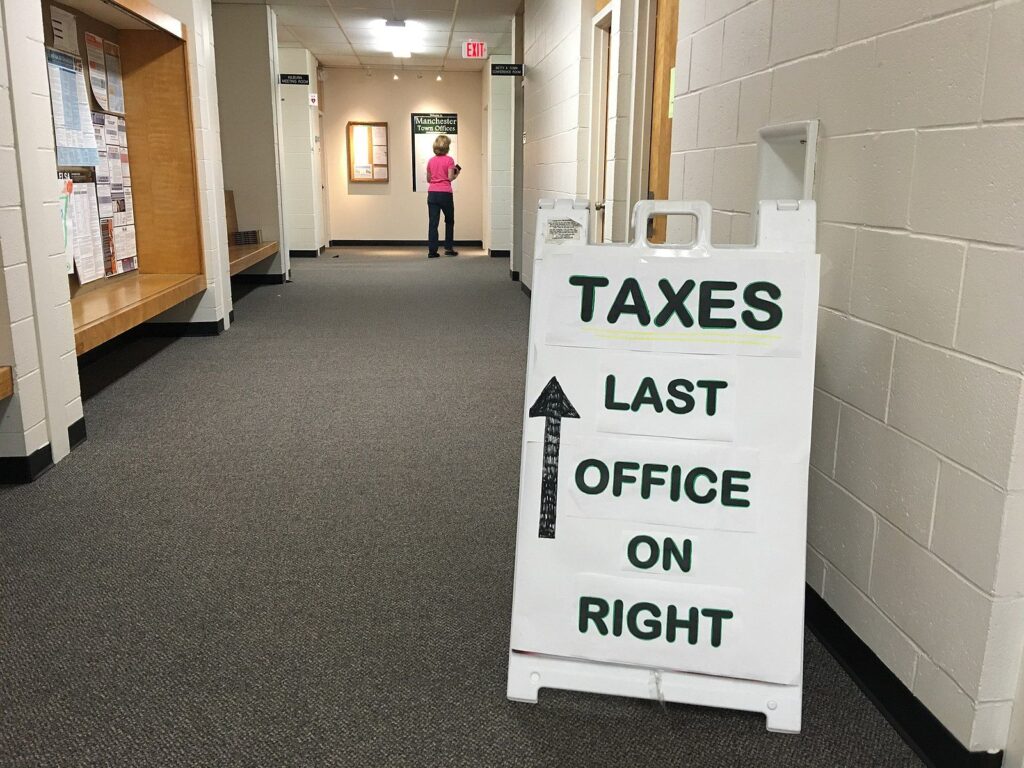Denver’s deadly streets: Pedestrian crash fatalities hit new high in 2023
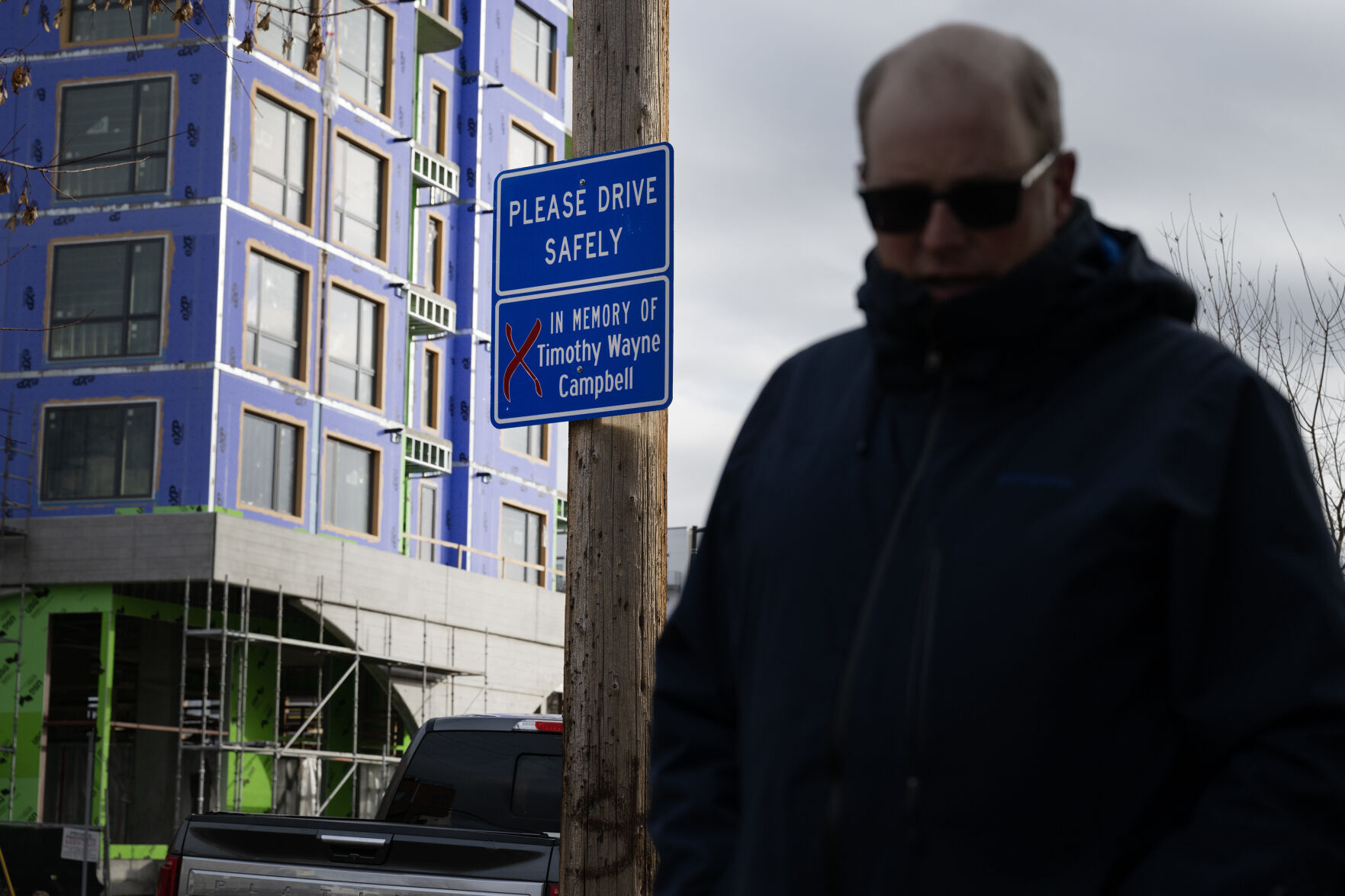
As two women sat outside the Decatur-Federal bus stop in Denver recently, waiting for a ride, an ambulance sped past, its lights blaring.
Neither looked up.
Earlier that spring, three pedestrians were struck and killed by vehicles at the same intersection of Federal Boulevard and West Howard Place.
When asked whether the street was dangerous for walkers, one promptly replied, “Oh, yeah, it is.”
“These cars don’t pay attention. They don’t care about pedestrians. They speed and they are reckless drivers. Police never pull anyone over, either,” she said.
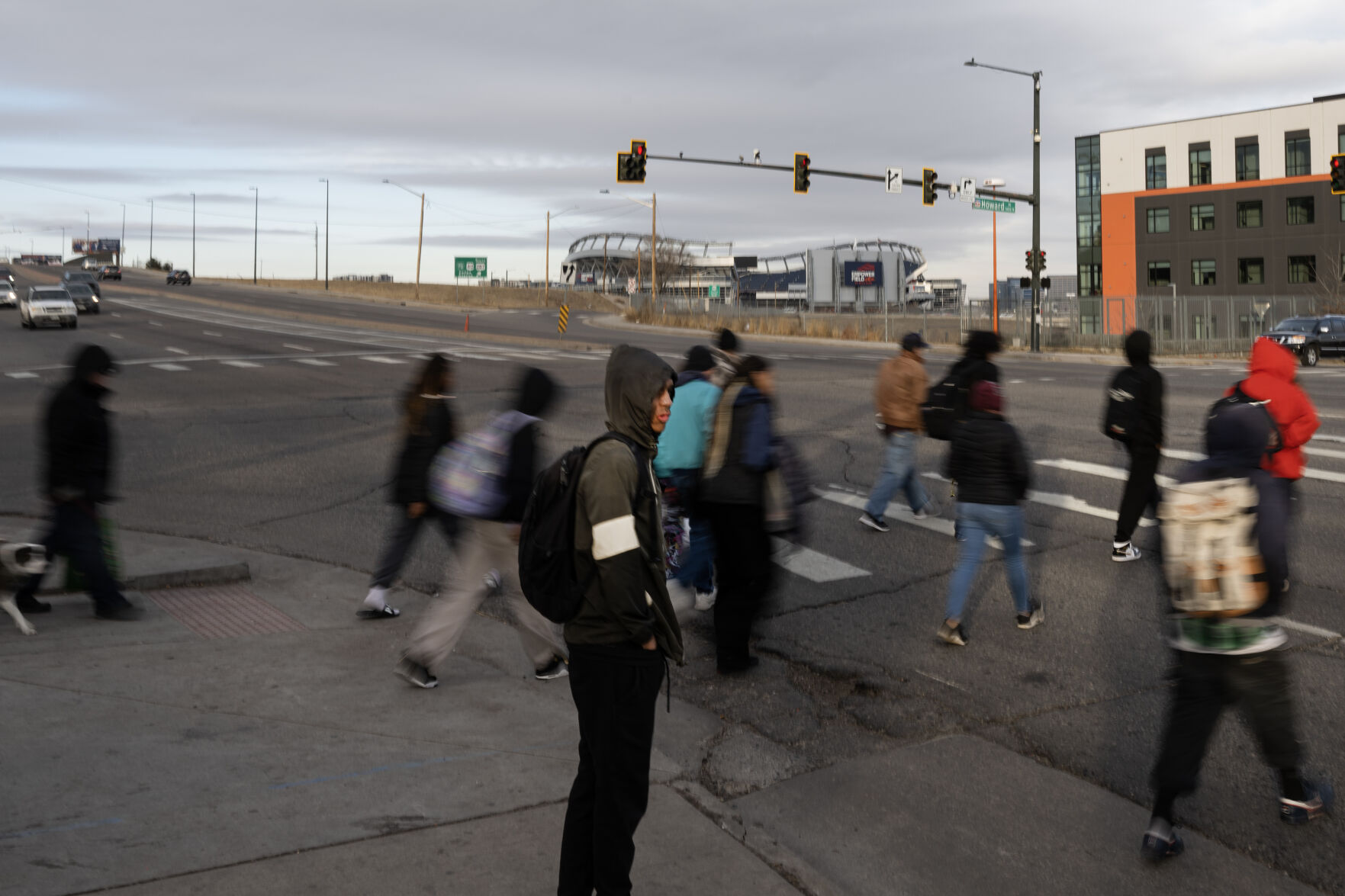
“It’s not only crashes here,” she continued. “It’s fatal. It’s always fatal.”
Just a few blocks south on Federal on Nov. 30, an auto-pedestrian crash killed a 60-year-old man as he attempted to cross the street.
He was in a wheelchair.
What’s been maiming and killing pedestrians in Denver is a mix of poorly designed road infrastructure, bigger vehicles, and the lack of care by drivers, officials and advocates insisted, saying it’s that combination that makes the streets so dangerous for those walking them. Some emphasized the lack of enforcement of traffic laws. Others said jaywalking is likely a factor.
There have been 28 such crash deaths in 2023, according to data from the Denver Police Department. These year-end numbers may yet increase due to a lag in the data.
By comparison, there were 21 in 2022, 16 in 2021 and 16 in 2020.
A separate data set from the medical examiner’s office showed that 13 homeless people died as a result of pedestrian-auto crashes. The data included both bicycle and auto-pedestrian collisions, though it didn’t break it down how many of the 13 were on foot or riding bicycles.
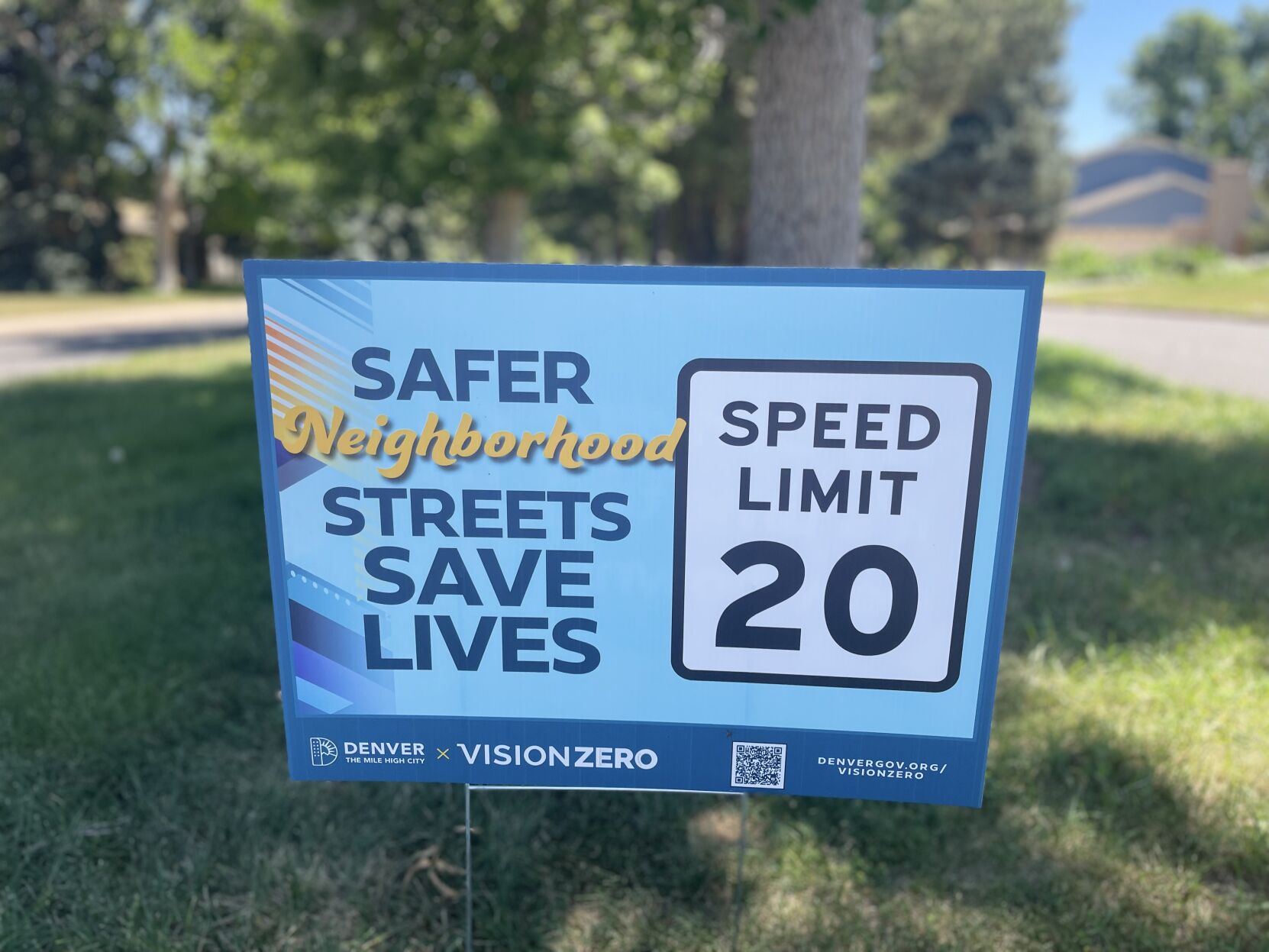
luige.delpuerto@gazette.com
The increase in deaths occurred five years after the city launched “Vision Zero,” its campaign to eliminate traffic-related deaths to zero by 2030. Meanwhile, Denver officials are doubling down on a strategy that puts primacy on mass transit, bike lanes and pedestrian traffic, pushed by activists, some of whom regard vehicles as incompatible to dense, urban living.
And as the deaths surged, Denver officials insist their vision would eventually lead to fewer crashes, injuries and deaths – but that it might take some time to get there.
The pedestrian deaths in Denver’s streets mirrored what’s happening statewide.
Colorado numbers have also hit a record-breaking high, leveling above the significant increase that occurred post-pandemic. Preliminary numbers show 128 pedestrian crash deaths reported in 2023, according to the Colorado Department of Transportation’s data dashboard.
2022 saw the state’s highest number on record, with 115 deaths. This number represented 15% of the state’s total traffic fatalities.
State and city officials both look to different causes and different solutions to try and lower the numbers – and make the roads safer for those on foot.
“The most likely way for my kid to die is a crash or gun violence,” said Allen Cowgill, who co-chairs the Denver Department of Transportation and Infrastructure’s advisory board. “It’s a real fear that you have as a parent – as a person just trying to get around your city.”
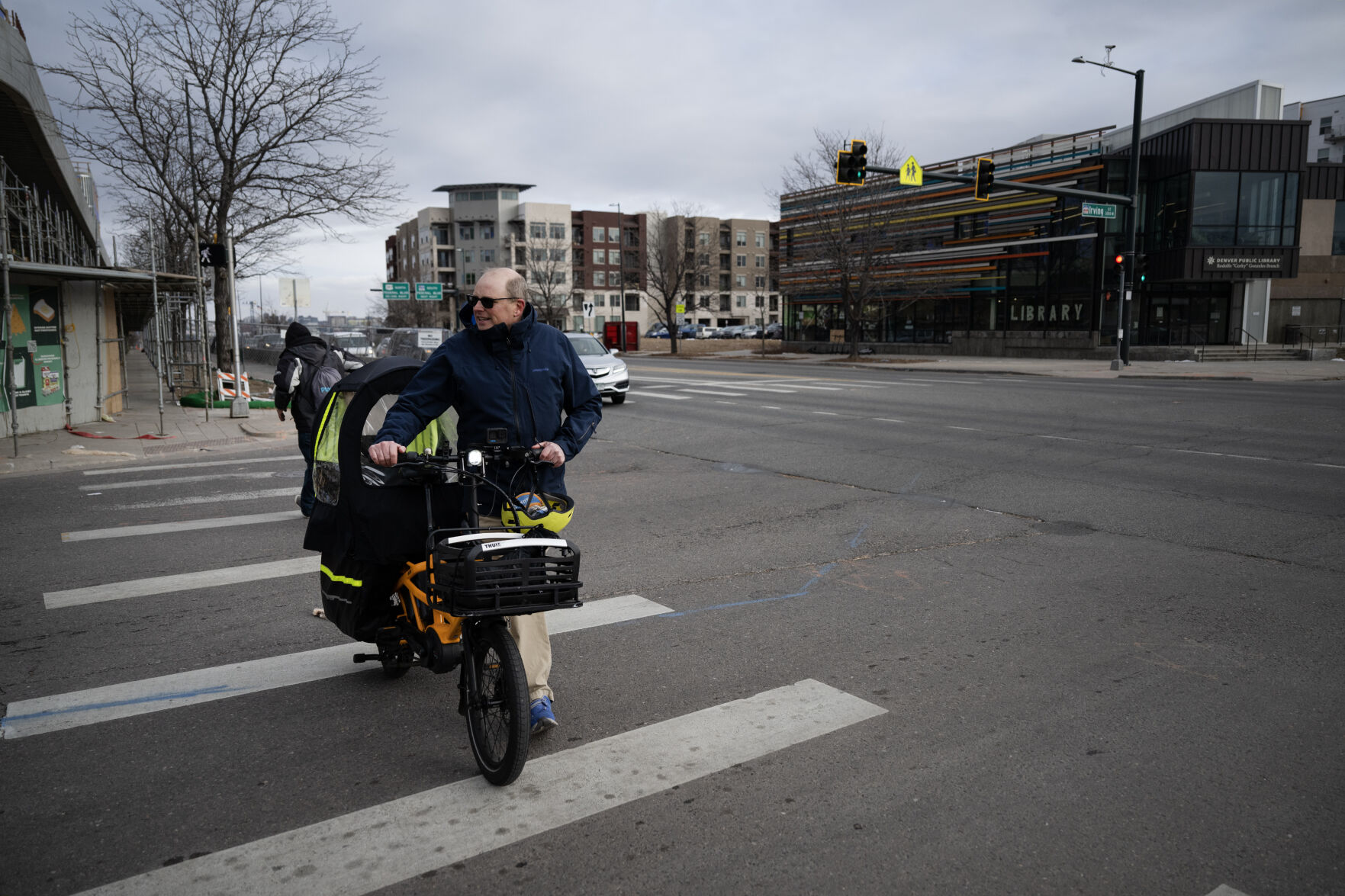
Cowgill has seen multiple friends get hit while walking in the city over the past few years – including Tim Campbell, who was killed when someone ran a red light on West Colfax Avenue and Irving Street on Sept. 11, 2020.
Sam Cole, a communications manager with the Colorado Department of Transportation Safety, foresees a decline through new city and state efforts.
“We will reach a tipping point eventually,” he said.
Speed kills
A house two blocks off of Federal, right near the four pedestrian deaths, has an array of signs in the front yard, begging drivers to slow down.
The owner of the home, Brian, has lived there for six years. Brian asked to keep his last name anonymous.
Brian pointed to all the homes surrounding his.
“There’s a kid in every house. They won’t even play outside in their front yards because it’s so unsafe,” he said.
“You can just sit here all day and hear people honking their horns,” he said. “They come off Federal doing 35 to 55 mph. This is a 25-mph zone.”
In 83% of traffic-related deaths, speeds above 30 mph are involved, according to Denver’s transportation agency.
And speed kills – only one out of 10 people will survive if hit by a vehicle going 60 mph or faster, the data show.
Multiple sources point toward speed – including both vehicles obeying the posted limit and those ignoring it – as one of the main factors in pedestrian crash deaths.
Aurora’s Lt. Chris Amsler added another potential contributor: Staffing shortages.
Anecdotally, fewer police officers means a drop in traffic enforcement.
As of December, Aurora had 748 authorized police positions but currently employs only 672 sworn officers, putting the agency’s staffing level at about 90%. Meanwhile, the Denver Police Department was 95% staffed as of Sept. 29 with 1,517 officers in the department, which currently has an authorized strength of 1,596.
A cursory review of traffic citations in the two cities showed that numbers in 2022 and 2023 were largely similar. In 2021, when pedestrian crash deaths stood at 16, Denver officers filed 49,268.
And some postulated that technology-driven strategies or substitutes to real police officers patrolling the streets just won’t cut it.
In July of this year, the Aurora Police Department rolled out the year-long photo speed enforcement pilot program, allowing the agency to deploy photo radar vans in residential neighborhoods with speed limits of 35 mph or less, and at school zones, construction zones and streets bordering municipal parks.
Councilmember Danielle Jurinsky, who also chairs the city’s Public Safety, Courts and Civil Service Policy Committee, called the program an “epic failure.”
Aurora Police Lt. Chris Amsler said the program, which ran from August to December 2023, resulted in over 4,000 violations.
But, he said, staffing woes remains to be an issue. A full photo enforcement staff requires one authorized supervisor and six technicians.
“In my experience, with more enforcement, we do see crash rates lower,” Amsler said. “We have a staffing issue like most departments in the metro area. Our officers are typically going from to call to call… That takes away time from them being able to go out and do traffic enforcement.”
Did decriminalization of jaywalking contribute to auto-pedestrian crashes?
Meanwhile, in Aurora’s neighboring city to the west, jaywalking tickets have disappeared.
The Denver City Council voted in January 2023 to decriminalize jaywalking, eliminating tickets if a pedestrian crosses the street anywhere other than a crosswalk.
Amsler, the Aurora police office, said jaywalking is ubiquitous.
“I see it all the time, where I’ll be stopped at an intersection and there’ll be a fully functional crosswalk – traffic lights, everything there – but folks will decide to cross like 5 feet from the intersection. They’ll zigzag between stopped cars or run in front of cars,” Amsler said.
He said he believes actions like jaywalking increase crashes.
Jill Locantore, executive director at the Denver Streets Partnership, a group that advocates for “people-friendly” streets, disagrees.
She said people often jaywalk “when there’s no safe pedestrian infrastructure available,” pointing toward stretches of Federal where crosswalks are “half-a-mile apart.”
“Instead of punishing the people who are the most vulnerable – and the most likely to be injured – what we need to be doing is redesigning the system so it’s safe for people to get where they are going,” Locantore said.
She pointed to the death of a man in a wheelchair on Federal, saying there was not enough time at the stop light for someone in a wheelchair to cross safely.
Denver’s transportation agency said it does not have enough data following the council’s vote to decriminalize jaywalking to empirically outline any benefits, though it’s something the department said it would research.
The proposal to decriminalize jaywalking – proposed by then councilmembers Candi CdeBaca and Jolon Clark, as well as now council president Jamie Torres – divided Denver’s policymaking body in January. Critics argued that it sends the wrong signal to the public, particularly at a time when traffic crashes that kill pedestrians were on the rise, while supporters countered that decriminalization is warranted because people of color disproportionately get cited for jaywalking.
CdeBaca, who lost her reelection bid last year, said 56% of the citations were give to White residents, when the latter accounted for 80% of Denver’s population. Then-District 4 Councilwoman Kendra Black countered she there’s no data to support the claim that the police specifically targeted any group.
Other advocates and officials believe it’s the design and regulated speed of the roads themselves that cause crashes, not behavior.
Cowgill said the main culprit are street designs in which highways go through the city.
“You’ve got people driving fast on those roads and combine that with people walking and using transit. It’s a recipe for people getting killed or hurt,” said the co-chair of the Denver Department of Transportation and Infrastructure’s advisory board.
Locantore doesn’t think the cause is that complicated.
“There are too many cars and trucks on the road that are too heavy and too tall that are driving too fast on streets that are too wide,” she said.
“We are trying to adjust our infrastructure to slow vehicles down,” said Nancy Kuhn, director of communications at the city’s transportation agency.
Vision Zero
A 2023 study by an injury law firm in Florida looked at 2017-2021 data from the National Highway Traffic Safety Administration to determine the states with the most dangerous intersections for pedestrians.
Colorado ranked as the most dangerous with 31.87% of pedestrian deaths at intersections. The national average stood at 17.2%.
Officials believe pedestrian infrastructure – like dedicated transit lanes, slower traffic and bulb outs on corners to make the distance between sides of the street smaller – can help curb the growing number of deaths.
“It’s a multi-pronged solution. There’s a lot going on here,” Kuhn said. “We’re trying to hit it from multiple angles to try and bring those numbers down.”
In 2015, Denver began laying the groundwork for what would be known as the “Vision Zero” initiative, a transportation safety philosophy most fully developed in Sweden in the late 1990s. Since its inception, Sweden has significantly reduced traffic fatalities, making it one of the safest driving cities in the world.
Denver strives to replicate that, with the goal of reducing traffic deaths to zero by 2030.
The way city officials implemented that vision invited some backlash.
For example, bike lanes installed at the intersection at Seventh Avenue and Williams Street on the corner of Denver’s Little Cheesman Park angered surrounding residents.
They described the colored zones and some 80 bollards – waist-high poles poking up from the pavement – as confusing and not well thought out.
In the updated version of Vision Zero, which was released last May 31 and which will govern the next six years, the city doubled down on its focus on the “high injury network” – the streets where most injuries and crashes happen.
About 5% of Denver’s streets make up 50% of vehicle fatalities.
The streets include South Federal Boulevard, East Colfax Avenue and South Broadway.
City officials want to reduce speed limits on major streets to 25 mph by 2028, a move that would require the approval of the Colorado Department of Transportation.
Other strategies include creating bulbs on corners to lower pedestrian distance to cross roads and slow turning car speeds, medians in the middle of roads for “pedestrian refuge” and pulling back parking on corners to increase visibility.
The city’s transportation agency pointed toward the changes built on Broadway from from 7th Avenue to Center Avenue as a template of future plans. A dedicated lane, protected two-lane bike path and medians were added in the area.
The agency also cited the Colfax Bus Rapid Transit project, which would create a designated bus lane from Union Station to Aurora.
Denver plans to add a center lane for bus travel and eliminate one lane of car travel. It will also add space for on-street parking, according to renderings shared by the city.
“Where we see the biggest opportunity to really get these streets off our high-injury network is to reimagine them completely,” Jennifer Hillhouse, director of transportation and mobility planning at the city agency, said. “Colfax BRT is a perfect example of that. Reducing lanes, getting more transit and options for people along the corridor so that it doesn’t operate as this auto-centric street any longer.”
“That’s where we get really excited,” Hillhouse said.
Meanwhile, the Denver City Council and Mayor Mike Johnston allocated $17 million in this year’s budget to expand bike lane infrastructure and fund transit changes for West Colfax, pedestrian crossings and other multi-model projects.
“We are going to keep driving hard on those safety improvements,” Rolf Eisinger, Denver’s Vision Zero program manager, said. “Sometimes, they take a little longer than others. Reimaging a whole street takes time, but until those can happen, we are all in this together.”
Cole, the communications manager at the Colorado Department of Transportation Safety, said Denver has “come a long way in making intersections safer for pedestrians.”
“But it takes time,” he said.
It also takes time for people to change their behavior and slow down in urban environments, especially in urban environments that have historically been designed for speed and vehicles,” he said.
“In the end, every driver is a pedestrian, too. Every driver wants to feel safe when they get out of their vehicle to walk across the street,” Cole said. “I think there’s a real appreciation for the safer environments that we are creating for them.”
Is vehicle size a factor?
Another potential factor for the increase in pedestrian crash deaths is the size and speed of newer vehicles, some suggested.
“The explosion of SUV and truck sales over the last couple decades has produced more vehicles with taller front ends, which are more harmful to pedestrians,” Cole said.
Cole said the increase in the average size of vehicles doesn’t necessarily hike the chances of pedestrian crashes, but they can increase the likelihood of fatality.
“There’s virtually no regulation for vehicles regarding the safety of the people outside of the vehicle,” Locantore said. “There is a lot of consideration of the passengers, but vehicles are not rated, tested, or regulated for people outside of the vehicle.”
Trucks and SUVs with hood heights greater than 40 inches are about 45% more likely to cause fatalities in pedestrian crashes than smaller vehicles, according to 2023 research from the Insurance Institute for Highway Safety.
Vikki Otero was walking her dog in Denver’s Speer neighborhood around 8:30 a.m. this fall.
Otero saw a car stop at a stop sign and she began to cross. As she walked through the intersection, she heard the car accelerate.
“Surely, they’re not accelerating. I’m right here,” she thought. “I’m hit.”
She suffered a hand injury that required surgery. Her dog was okay. The driver was extremely sympathetic, according to Otero. He claimed he couldn’t see her because of the sun.
“Accidents do happen,” Otero said.
“My circumstances were so comparatively minor that I almost feel guilty talking about it as something that’s an important incident,” she said. “I got away so minimally. I’m so very aware that it could have been so much worse.”
Officials said one tip can lower pedestrian crash deaths – pay attention.
“When you get in your car, realize it comes with responsibility,” Nancy Kuhn, who speaks for the city’s transportation agency. “You are protected by thousands of pounds of metal, but we really need to look out for our family members who may be walking, or biking or using alternate modes.”
Vikki Otero, who was hit by a car, said pedestrians and drivers need to be more cautious. In particular, pedestrians should take a second before crossing.
Wait and see if someone runs the red light, she said.
Drivers should pay attention to roads and keep distractions away, Lt. Chris Amsler of Aurora said.
He added that pedestrians should walk against traffic on roads without sidewalks, allowing them to move if a car is coming at them.
